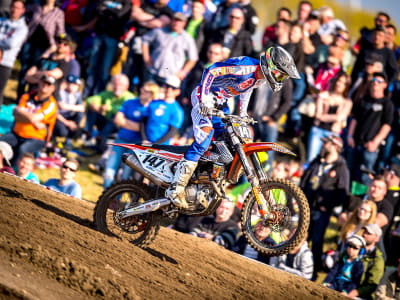Suspension settings in the sport of motocross are an extremely complex topic, as there are a lot of things to consider. Basically, three main factors – the amount of spring travel, the nature of the rider and conditions at the track in question – should be taken into account in order to tune the suspension on a motocross bike so that it is perfectly set up. No two riders weigh exactly the same and each has his own style of riding, and speed is also a factor in determining the best suspension settings. Every motorcycle has to be adapted individually, so that the motocross rider can get the best out of the bike.
In order to adjust the suspension to perfectly suit the rider, the suspension’s static travel must first be determined. By that, we mean the degree to which the bike can dampen its own weight. Next, the rider sits on his motorcycle wearing his MX equipment to ascertain what is known as the negative spring travel to indicate the amount of compression at the rear of the motorcycle. Once springs, forks and rear are almost in equilibrium, then negative spring travel has been adjusted correctly. If not, then the forks may have to be swapped, or the damper settings readjusted by means of the compression and rebound stops.
The rider’s weight is a big determining factor as far as suspension goes. For example, heavier riders need harder springs, whereas riders who are lighter require softer ones. In general, the softer the settings the more the unevenness of the track can be compensated for. However, a motorcycle on soft suspension can quickly become unstable over the jumps and through faster sections of track. If, on the other hand, the suspension is hard, the rider will feel every bump but has an advantage where there are table tops and fast sections of track.
So in actual fact, the MX bike is set up just right for the rider when the mechanic finds the ideal compromise between settings that allow more travel on sandy tracks but slightly increase spring pretension on muddier circuits.
